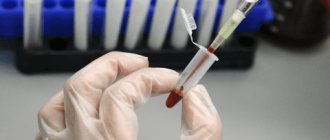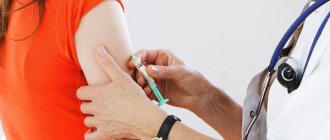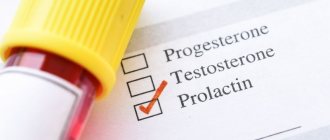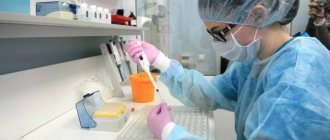Let us define the concept of nationality and the meaning of this term for genetics. For the average person, nationality is a person’s belonging to a nation, country or group of people. In fact, this has nothing to do with ethnic origin. Accordingly, for genetics, nationality is not a significant term, since it does not actually determine a person’s belonging to any ethnic group. Since this term is widely used, we are obliged to discuss it and consider the DNA test for nationality as a genetic test.
Can genetic tests be trusted to determine nationality?
How is DNA ancestry determined?
Finding out the origin of a person on the paternal or maternal lines is not difficult for modern science. In the first case, the Y-chromosome haplogroup is analyzed (test for men), in the second case, the mitochondrial DNA haplogroup is analyzed. The client receives his result, which describes the history and distribution of his haplogroup.
A haplogroup is a kind of genetic marker that allows you to trace the origin to the ancestral population: in which region the original haplogroup arose, when a specific branch that a person has separated from it.
This is possible due to the fact that the Y chromosome is inherited strictly through the male line, and the mother passes on mitochondrial DNA to all her children.
Another way to determine a person's ancestry is based on the analysis of autosomal chromosomes (22 chromosomes, excluding the sex chromosomes). It is also effective, but does not allow you to differentiate from whose line you received this or that genetic information - maternal or paternal.
How is the origin test carried out?
Genetic ancestry tests are performed in the same way as other genetic tests. Any human biological material will do. Commercial companies often offer buccal epithelium sampling as the simplest and most convenient option. But, in principle, blood, hair or nails, or any other tissues and fluids of the body can serve as biomaterial. True, the price for testing such biomaterial will most likely be higher.
Population or nationality?
Commercial laboratories present this type of service as tests for ethnicity (nationality, genetic genus). However, ethnicity and nationality are not biological, but social concepts; they are determined by a person’s self-awareness. Population geneticists carefully approach the line beyond which the subject of their research—gene pools—comes into contact with ethnic groups. The object of their research is precisely populations.
A population is a group of people that prefers to intermarry within their own group and share a common habitat.
And although most peoples (but not all) are populations, and the gene pools of different populations differ in the frequencies of occurrence of various genetic variants, these differences are determined precisely at the level of populations, not ethnic groups. Since the genetic diversity in any population is great, it is impossible to determine his ethnicity based on the genotype of one individual person. There are no genetic markers unique to one people. A population may contain either one of the variants of any marker or many. At the same time, representatives of other nations may have the same options. They may differ in frequency, and it is population studies that determine these differences.
What the result of a scientifically based ancestry test should look like
Typically, commercial companies issue test results in the form of a “genetic passport.” It describes the haplogroup (if it is a Y chromosome or mitochondrial DNA) and the markers studied. Descriptions of haplogroups are taken from publicly available resources and scientific articles. It reflects dating, migration, distribution area and frequency of this variant in different populations. Often they add links to paleogenetic studies with information about in which archaeological cultures this variant was identified.
If a person wants to learn more, he can turn to platforms created by genetic genealogists for discussion and exchange of information.
Unfortunately, there is no single formula, template or protocol by which the result of a genetic test for ancestry is formulated. It all depends on the laboratory providing the services. What can be said with certainty is that interpretations should not contain incorrect formulations: neither too specific nor too vague. Results in the form “you are 30% Tatar and 70% Russian” or “you have an Aryan haplogroup” are not adequate.
For example, in the Ossetian gene pool, up to 75% of the Y-chromosome haplogroup G2a is found, but this does not mean at all that this is a special “Ossetian” haplogroup. And if a person is diagnosed with this variant, this does not mean that he is genetically Ossetian or 75% Ossetian. This option is typical for the peoples of the Caucasus (Karachais, Balkars, Kabardins, etc.) and is found beyond its borders.
Thus, determining your origin is a very real task, but it is important to choose a laboratory that conducts testing responsibly and gives a correct interpretation of the results without misleading clients.
Authors:
Gazoyan Ani Grachikovna
Journalist
Consultants:
Baranova Elena Evgenievna
Doctor
Finding relatives through a DNA test. Part 2 - Which DNA test to buy and how?
I have already talked about the benefits of DNA testing
when searching for relatives and drawing up a family tree, and now I’ll tell you how to choose and buy a test and how to send it back. Only then will the result be obtained and analyzed, but first you need to buy the test itself and submit the biomaterial, and also send the test back.
How our DNA stores information about our ancestors
I have already spoken in detail in another article, but it must be repeated.
Each child receives chromosomes from their parents: the Y-chromosome only from father to son, and the X-chromosome from mother to sons and daughters, but sons no longer pass on the X-chromosome; more
precisely, sons pass on the X-chromosome of their mother (grandmother) to their daughters daughters) but then, when transmitted to descendants, this “paternal” X chromosome is inactivated
. And each DNA carries information about all your ancestors, regardless of gender, but with each new generation, the percentage of information about older ancestors is diluted with information about new ones, conditionally divided by two each time. From here it follows that it is possible to do a test and identify matches of DNA particles between different people. Actually, this will be discussed below.
What types of DNA tests are there?
DNA tests can be divided into 3 types: male line test (Y-DNA), female line test (Mt-DNA), autosomal test (AU-DNA).
Male test (Y-DNA) - allows you to determine the DNA branch tens of thousands of years ago with its intermediate mutations, which allows you to calculate the descendants of one ancestor in common with you at various milestones (conditionally 300 years, 1000 years, 5000 years), each time it occurred DNA mutation and the “branch” was divided into sub-branches.
The test examines both STR markers, which change over time and these changes are passed on to sons, and SNPs, which take into account single changes in the DNA sequence and allow one to accurately determine the haplogroup. Female test (mt-DNA) - they examine the mitochondrial genome and also look for mutations, and after comparison with thousands of other samples, they can determine the haplotype and haplogroup of the person being tested. This test will make it possible to determine the origin of different people from the same ancestor on the maternal side, but it is also impossible to understand from this data whether these people are first cousins, for example, or sixth cousins, as is the case with the Y-test.
The autosomal test (au-DNA or at-DNA) is the most popular. This is a general test for all your ancestors at once. It finds a match with everyone tested, with whom you will have a common ancestor in about 8-10 generations. Why is it so inaccurate? There are many nuances, for example, in percentage terms, fourth cousins at the same level from a common ancestor and a second cousin with a difference of two generations will have approximately the same percentage of the same part of DNA. It all depends on the age of the person being tested, or more precisely on the number of generations to the common ancestor.
How much do DNA tests cost?
Let's start with the fact that most laboratories on the market are foreign laboratories, so prices will be in dollars.
The most popular and most accessible test is autosomal
.
Its cost is usually around $80. But in Russian laboratories the cost varies from 10 to 20 thousand rubles.
On sales days, tests can be bought for $50, and sometimes even cheaper. I even bought it for $39 with free shipping (for purchases of 2 or more pieces).
Next in cost is the Female Test (mt-DNA).
Its cost is much higher - about $160. Both men and women can make it for themselves and trace the female line.
Well, the most expensive is the Male test (Y-DNA). Only men can do it and trace the direct male line.
The cost of the male test varies depending on the number of markers tested. The more markers tested in your test, the more accurate and naturally more expensive it is.
The cost of such a test starts from about $120 for 37 markers and for a full test of 700 markers you will pay $450.
There are “combine” options, you can order only 37 STR markers, and then further research the SNPs you need, or you can immediately pay for all possible STRs and SNPs and not worry, but this is a separate topic for thought.

Since most of us don’t need to buy a “here’s tomorrow” test, you can easily make a purchase on discount days, which happen quite often. The biggest discounts are traditionally for DNA Day at the end of April and for Black Friday at the end of November. The discounts are quite significant!
Which DNA test is better to buy and why?
As I said earlier, there are many laboratories that sell tests and provide analysis.
How to choose a laboratory and which test is better to buy? There are several factors here: ease of purchase, size of the database of other tested ones, price.
Let's start with the price of the test
Russian ones, “Genotek”, “Gentis” are convenient, they sell tests within the country, deliver to your home, but the price is 10-20 thousand rubles per test.
Foreign companies provide similar services at a cost that is 3 or more times cheaper. True, the Russians are trying to squeeze additions like “Health” into the test.
Ease of purchase
Foreign companies allow you to buy a test “online” with home delivery, but we have all become accustomed to ordering online. But there are nuances in the form of changing Russian legislation, which begins to prohibit foreign companies from collecting material, or the companies themselves do not sell directly to Russia for their own reasons. You need to have a little knowledge of ordering tests through anonymizers and proxies in order to get around all these supposed “restrictions”. But the cost is several times less. Well, the waiting time for a parcel is sometimes a month or more.
Tested Database
This is one of the most interesting parameters, because... If the test is at least 3 times cheaper in one company than in the second, provided that the database of tested people in the second company is 10 times larger, I will choose the second company. In addition, there are laboratories that are more popular with Americans, for example, and there are laboratories that are more popular with the post-Soviet space, Russia.
Ability to “update the test” without retaking it
Many companies allow you to take one test, storing the remainder of the biomaterial in their storage facilities for several years. If later you decide, for example, to add a Y-DNA analysis to a previously passed autosomal test, then you only need to pay extra (for example, the “FamilyTreeDNA” laboratory) and the analysis will be done. There is no need to re-submit the biomaterial. Other companies (for example, MyHeritage) do not provide this opportunity.
This is especially valuable, given that people tend to age and die, and you may have a desire to update the test and do a more in-depth analysis later, or you may have such a desire, but there is no money for it now and you want to do different analyzes step by step.
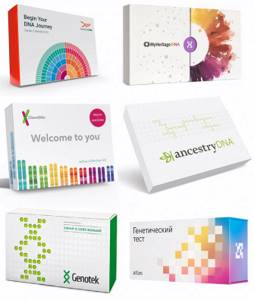
Here's a summary of choosing an autosomal DNA test
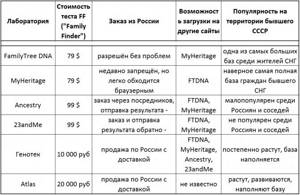
There are other laboratories, but the ones mentioned will be enough for you to choose from. The cost of the test is “basic”, without discounts, cheaper on sales.
The most logical, in my opinion, is to purchase a test from the FamilyTreeDNA company for reasons of price, ease of purchase, the ability to upload the result to other sites and the ability to later upgrade the test without retaking it. You can order from “Ancestry” or “23andMe”, getting into their databases that are closed for import, and then upload to more popular ones. Ordering through an “intermediary” is not a problem, just some extra steps with registration on an intermediary site (such as “Shipito”), payment nuances and others. More on this in another article.
What tests “to the maximum” can be done for everyone?
Using the example of the FamilyTreeDNA laboratory, I will show you which tests can be ordered to the maximum for a man and a woman and approximately how much it costs without discounts.
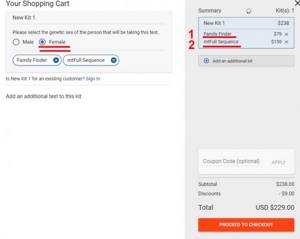
For women, the maximum is “autosomal” + “female line”.
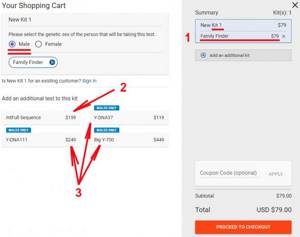
For men, the maximum is “autosomal” + “female line” + “male line”. As an option, instead of the full “male” one, you can use fewer pure markers, i.e. get a little less depth of research.
How to compare DNA tests done in different laboratories?
An important addition that cannot be ignored.
It is possible to compare tests of different people done in any laboratory. Anyone who does tests can optionally upload the test to sites that compare everyone to everyone, regardless of the laboratory. The problem is that not everyone does this, but in vain. If your test is “Family Finder”, then www.GedMatch.com will help you.
If you have done the “male” Y test, then you must participate in the www.yfull.com project.
But this is all about the question of the results, but first you need to buy the test, wait for it to be received, submit the biomaterial, send the test back to the laboratory and wait for the result to be ready in your personal account on the website.
